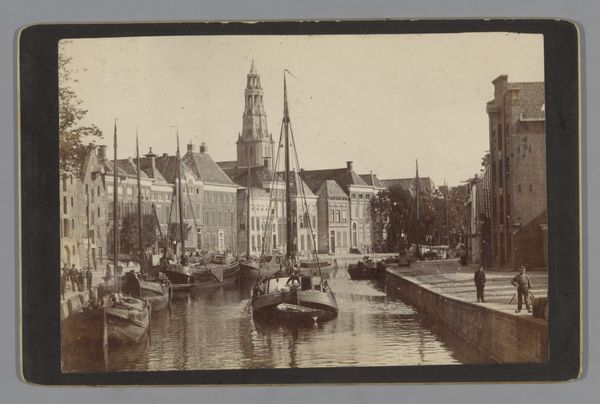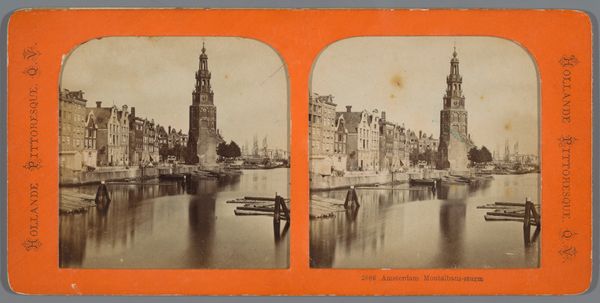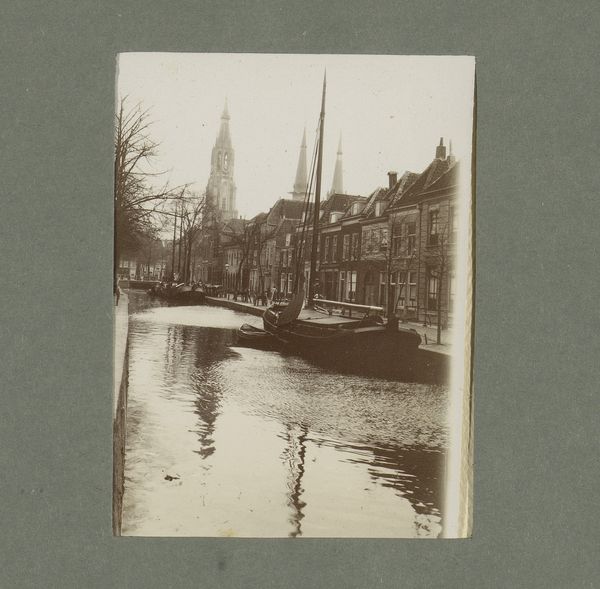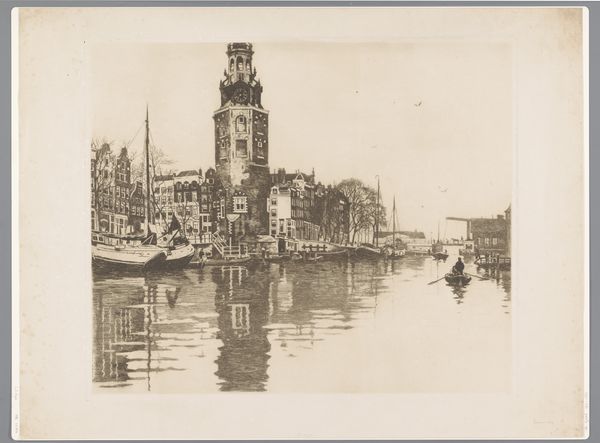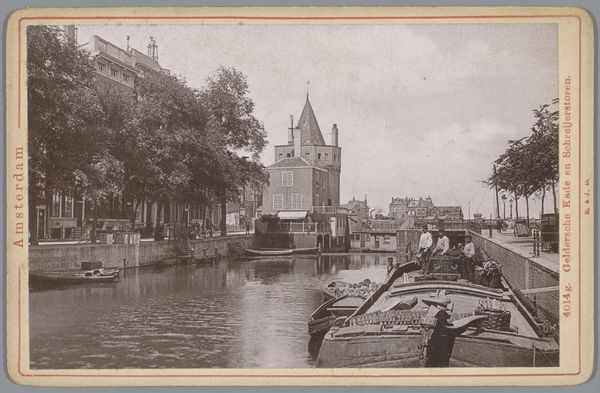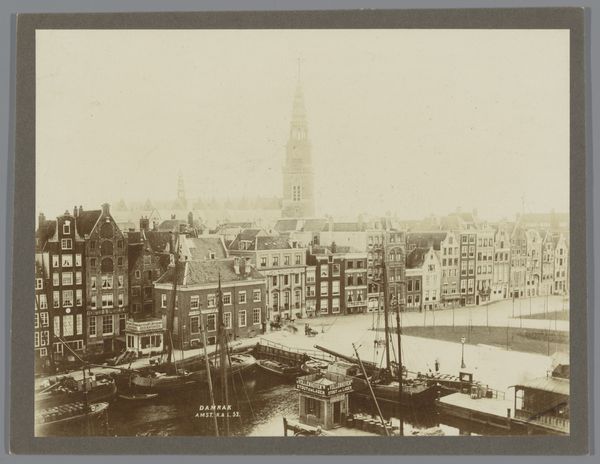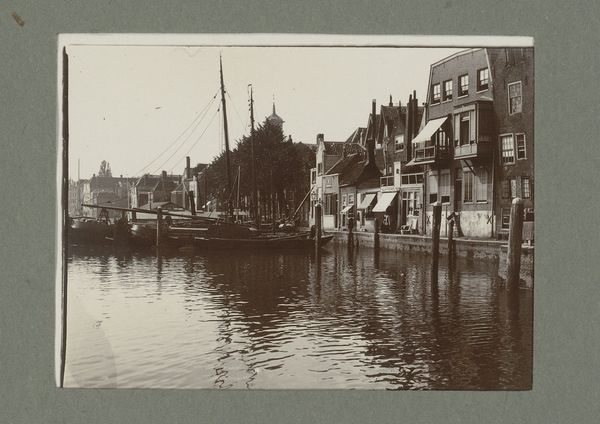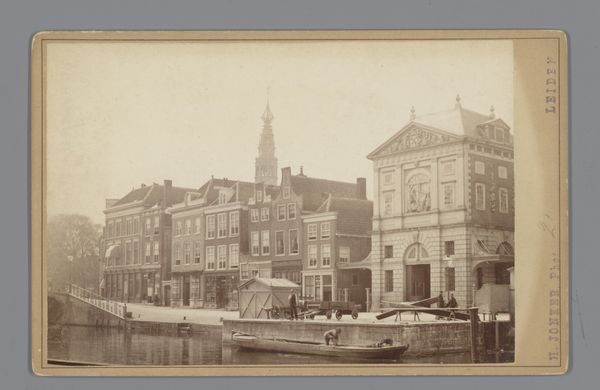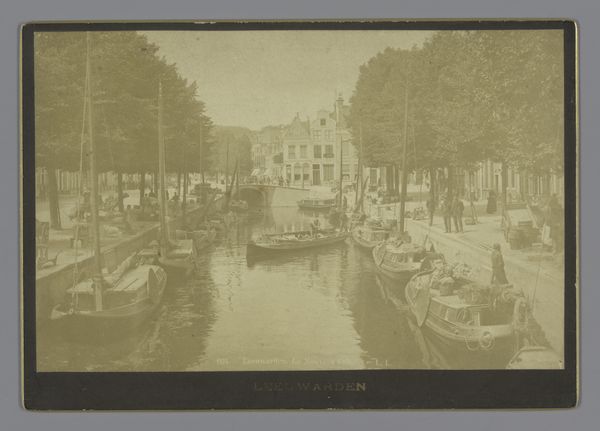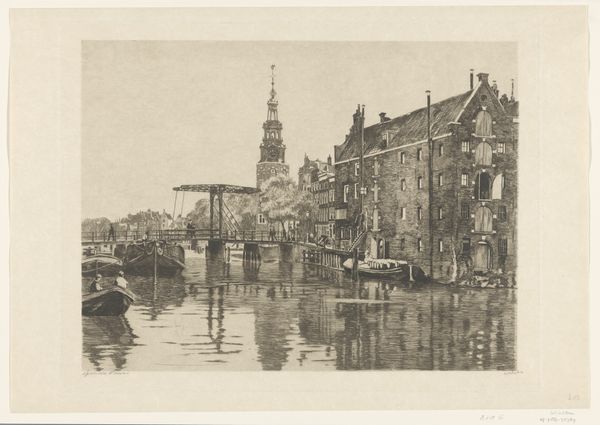
Gezicht op de Oude Schans en de Montelbaanstoren, gezien richting het IJ, Amsterdam c. 1900 - 1925
0:00
0:00
print, photography, gelatin-silver-print
#
pictorialism
# print
#
landscape
#
photography
#
gelatin-silver-print
#
cityscape
Dimensions: height 85 mm, width 240 mm, height 133 mm, width 204 mm
Copyright: Rijks Museum: Open Domain
Editor: Immediately, the somber stillness captivates. The gray tonality lends an aura of aged reflection upon the urban landscape, almost melancholy. Curator: Indeed. What we have here is a gelatin-silver print by Alb. Kapteijn, circa 1900-1925. The rather lengthy title translates to "View of the Oude Schans and the Montelbaanstoren, seen towards the IJ, Amsterdam." Editor: The reflection of the Montelbaanstoren, centrally positioned, nearly bisects the image. It draws the eye, not just vertically, but also toward the calm surface of the water. It almost functions as a Rorschach, the way it splits the architecture. Curator: Precisely. Observe how the composition hinges upon this very dichotomy, mirroring both structure and surface. Notice, as well, the linear progression—how Kapteijn employs a sharp horizontal aspect to compress space. The contrast helps to flatten the scene, allowing our gaze to flow unimpeded from left to right. Editor: Thinking about gelatin silver itself, that industrial emulsion gives everything a certain democratic quality, accessible. And yet, the careful angling feels quite considered, almost formal, hinting at a tension between material realities and intentional artistic arrangement. Who used the print? Why did Kapteijn settle on it? Was there some patron or process driving its distribution? Curator: Excellent points. And what semiotic layers reside within that choice, in itself? Did it denote something else? Consider how that tonality is essential to a particular brand of Pictorialism at the beginning of the century, one aiming at both naturalism and expressive, almost allegorical dimensions through soft focus, rich depth and suggestive compositions. Editor: Right. The labor—photographer's hand and darkroom’s alchemy, chemicals coaxing image into existence, becomes central to understand a city as both concrete locale, yet romanticized at the turn of the century. So, is it about documentation or transformation, commerce, or nostalgia? Curator: It represents a convergence—a distillation of city both perceived and actively sculpted, rendered via light and emulsion. The silver does allow a certain democratization, but its use does not erase choices. Its material manifestation reveals even as it may seek to conceal. Editor: Quite. Looking more closely, it's clearer to me how materiality provides a deeper understanding—a kind of access point, I now realize, which lets one analyze Kapteijn's intentions while situating a cultural reading. Curator: A fitting end note, for a piece that is an essay both about the city and seeing.
Comments
No comments
Be the first to comment and join the conversation on the ultimate creative platform.
